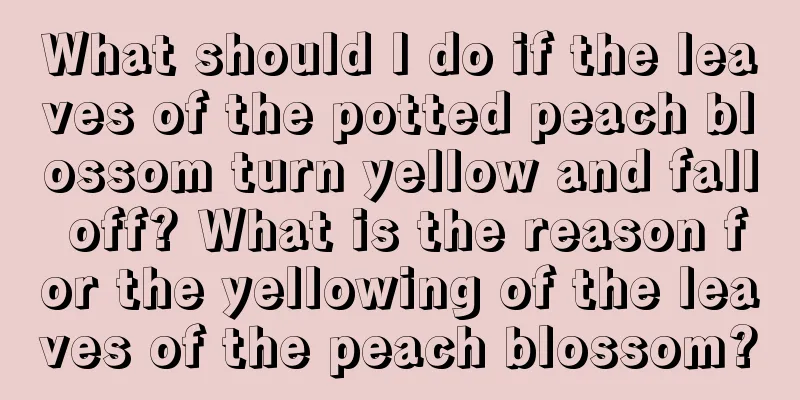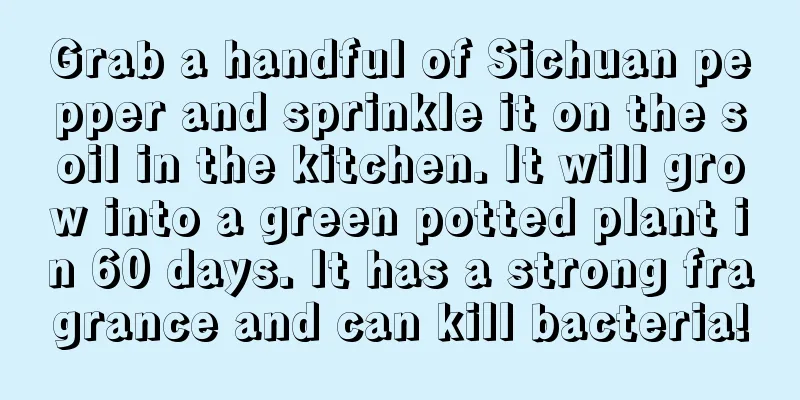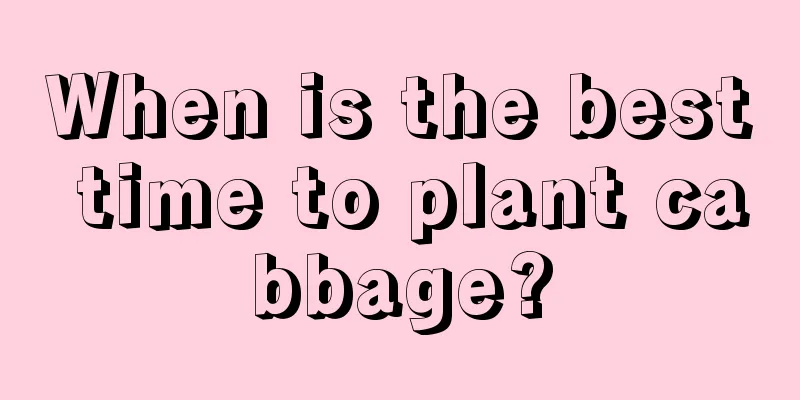What should I do if the leaves of the potted peach blossom turn yellow and fall off? What is the reason for the yellowing of the leaves of the peach blossom?

1. Proper shadePeach blossoms like light, but if the light is too strong, it will burn the leaves and cause water loss, causing them to turn yellow and fall off. In case of yellowing and falling leaves caused by excessive light, the plant needs to be placed in semi-shade immediately and sprayed with water appropriately to help recovery. Usually provide adequate shade, especially in summer noon, and be sure to avoid exposure to the scorching sun. 2. Reduce wateringPeach blossoms do not require much water. If you water them too much, it will easily cause the roots to be submerged, which will affect their breathing and cause the leaves to turn yellow. In this case, the moisture needs to be drained out immediately, and it should be placed in a place with good air circulation. The soil should be loosened appropriately to accelerate the evaporation of moisture. When watering, you should control the amount of water and not water too much, otherwise it will affect the growth. 3. Change pots and soilIf peach blossoms grow in severely saline or overly sticky soil, the leaves of the plant will turn yellow and fall off. At this time, new soil needs to be replaced. Generally, loose and fertile sandy loam should be used. You can also use leaf mold and river sand to prepare the potting soil. This not only has certain nutrients, but also has good air permeability, which facilitates the growth and breathing of the roots. 4. Prune the rootsPeach blossoms require certain nutrients to grow. If too much fertilizer is applied or the fertilizer concentration is too high, it can easily burn the roots, causing them to rot and affect leaf growth. If the root rot is caused by concentrated fertilizer, you need to remove the plant from the pot immediately, trim the rotten roots with sterilized scissors, and change the soil and replant. Dilute the fertilizer thoroughly before applying it to reduce the fertilizer concentration. |
<<: Cultivation methods and precautions of red nan
>>: Management technology of yellow pear
Recommend
Breeding methods and precautions of Songxia
1. Maintenance methods 1. Soil: When planting in ...
Can cockscomb bloom in winter?
1. Temperature The annual cockscomb is suitable f...
How to raise Rhododendron chinense
1. Breeding environment 1. Soil: It likes slightl...
Reasons and treatments for yellow leaves of moonflower
1. Temperature discomfort Reason: The temperature...
If your mouth feels astringent and numb from persimmons, rub some "wine" on the skin and leave it for 3 days, then it will be sweet and delicious!
Friends who like to eat crispy persimmons must ha...
How to raise white snow ray, pictures of white snow ray
1. Adequate sunlight Snow lily is a succulent pla...
How many times can ginger be planted in a year? If ginger is planted in one year, does it need to be planted in the second year?
How many seasons can ginger be planted in a year?...
Common varieties of June snow
Variants of June Snow Yin Wood This variant is sh...
The efficacy and function of soapwort
Garden appreciation We often see patterns or flow...
Rose management methods in spring
Rose management methods in spring Adapting to cha...
How to make ivy grow faster
1. Soil The soil used should be suitable for ivy....
Main species of Bidens pilosa
Bidens pilosa The pinnate-leaved Bidens pilosa is...
How to cultivate Artemisia selengensis
1. Soil Artemisia selengensis is suitable for cul...
Growth environment conditions and characteristics of Houttuynia cordata
Growth environment conditions and requirements of...
Causes and treatments of yellow leaves of Polygonatum odoratum
1. Overwatering Reason: Polygonatum odoratum is m...









